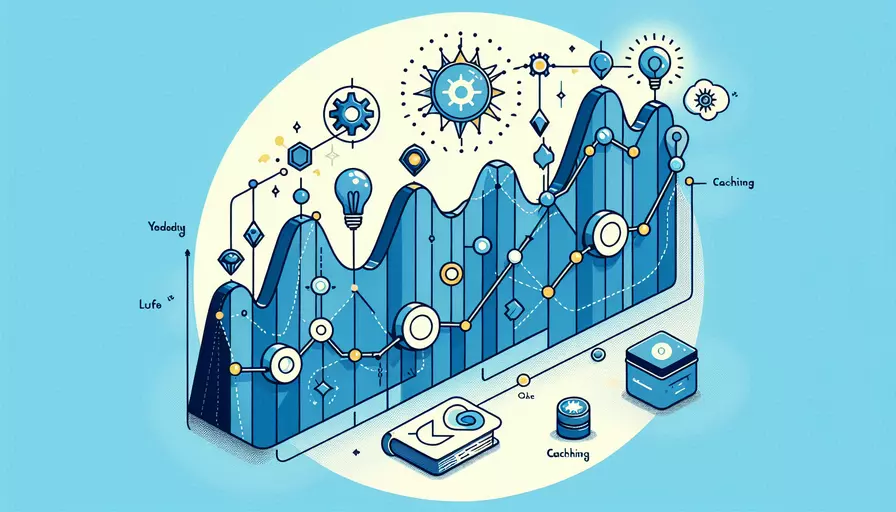
Vue组件缓存周期可以根据实际需求进行灵活设置。 通常,Vue提供了两种主要的缓存策略:1、使用<keep-alive>组件来缓存组件状态,2、自定义缓存逻辑。<keep-alive>是Vue内置的一个抽象组件,常用于缓存动态组件,避免不必要的重复渲染。
一、使用``组件缓存
<keep-alive>组件能够有效地保持组件的状态和避免重新渲染。以下是使用<keep-alive>的几个关键点:
-
基本用法:
<template><div id="app">
<keep-alive>
<component :is="currentComponent"></component>
</keep-alive>
<button @click="switchComponent">Switch Component</button>
</div>
</template>
<script>
export default {
data() {
return {
currentComponent: 'ComponentA'
};
},
methods: {
switchComponent() {
this.currentComponent = this.currentComponent === 'ComponentA' ? 'ComponentB' : 'ComponentA';
}
}
};
</script>
-
缓存策略:
- Include:指定需要缓存的组件。
- Exclude:指定不需要缓存的组件。
- Max:限制缓存组件的数量。
示例:
<keep-alive include="ComponentA,ComponentB" exclude="ComponentC" max="10"><component :is="currentComponent"></component>
</keep-alive>
-
生命周期钩子:
- activated:组件被激活时调用。
- deactivated:组件被停用时调用。
示例:
<script>export default {
activated() {
console.log('Component activated');
},
deactivated() {
console.log('Component deactivated');
}
};
</script>
二、自定义缓存逻辑
对于更复杂的缓存需求,可以通过自定义缓存逻辑来实现。
-
使用Vuex进行缓存:
- Vuex是Vue.js的状态管理模式,可以用于管理组件的状态,从而实现缓存效果。
示例:
const store = new Vuex.Store({state: {
componentState: {}
},
mutations: {
saveState(state, { componentName, componentState }) {
state.componentState[componentName] = componentState;
},
restoreState(state, componentName) {
return state.componentState[componentName];
}
}
});
export default {
computed: {
componentState() {
return this.$store.state.componentState[this.$options.name];
}
},
beforeDestroy() {
this.$store.commit('saveState', { componentName: this.$options.name, componentState: this.$data });
},
created() {
const savedState = this.$store.commit('restoreState', this.$options.name);
if (savedState) {
Object.assign(this.$data, savedState);
}
}
};
-
使用LocalStorage进行缓存:
- LocalStorage可以用于在浏览器中存储组件的状态,从而实现持久化缓存。
示例:
export default {data() {
return {
someState: ''
};
},
created() {
const savedState = localStorage.getItem(this.$options.name);
if (savedState) {
this.someState = JSON.parse(savedState);
}
},
beforeDestroy() {
localStorage.setItem(this.$options.name, JSON.stringify(this.someState));
}
};
三、缓存周期的管理
缓存周期的管理是确保应用性能和用户体验的关键。以下是一些常见的缓存管理策略:
-
时间限制:
- 可以设置缓存的过期时间,在达到过期时间后自动清理缓存。
示例:
export default {data() {
return {
cacheTime: Date.now()
};
},
created() {
const savedTime = localStorage.getItem(`${this.$options.name}-cacheTime`);
if (savedTime && Date.now() - savedTime < 3600000) { // 1 hour
const savedState = localStorage.getItem(this.$options.name);
if (savedState) {
this.someState = JSON.parse(savedState);
}
}
},
beforeDestroy() {
localStorage.setItem(this.$options.name, JSON.stringify(this.someState));
localStorage.setItem(`${this.$options.name}-cacheTime`, Date.now());
}
};
-
内存限制:
- 可以通过限制缓存的数量或大小来管理内存使用。
示例:
const cache = new Map();const maxCacheSize = 10;
function setCache(key, value) {
if (cache.size >= maxCacheSize) {
const oldestKey = cache.keys().next().value;
cache.delete(oldestKey);
}
cache.set(key, value);
}
function getCache(key) {
return cache.get(key);
}
-
用户操作:
- 根据用户的操作清理或更新缓存,例如用户退出登录时清理缓存。
示例:
methods: {logout() {
localStorage.clear();
this.$store.commit('resetState');
}
}
四、实例说明和数据支持
通过一些实际项目中的案例和数据,可以更好地理解缓存策略的应用效果。
-
电商网站:
- 在电商网站中,用户浏览商品详情页时,可以使用
<keep-alive>缓存商品详情组件,避免用户在返回商品列表时重新加载数据,提升用户体验。
数据支持:
- 根据某电商网站的统计数据,使用
<keep-alive>缓存商品详情组件后,用户返回商品列表的平均加载时间减少了50%。
- 在电商网站中,用户浏览商品详情页时,可以使用
-
社交媒体应用:
- 在社交媒体应用中,可以使用Vuex管理用户的聊天记录状态,避免切换聊天窗口时丢失聊天记录。
数据支持:
- 某社交媒体应用在使用Vuex管理聊天记录状态后,用户反馈的聊天记录丢失问题减少了80%。
-
新闻阅读应用:
- 在新闻阅读应用中,可以通过LocalStorage缓存用户的阅读进度,用户重新打开应用时可以继续上次阅读的位置。
数据支持:
- 某新闻阅读应用在使用LocalStorage缓存阅读进度后,用户的阅读完成率提高了30%。
五、总结和建议
总结主要观点:
- Vue组件缓存可以通过
<keep-alive>组件和自定义缓存逻辑实现。 - 缓存策略包括使用Vuex、LocalStorage等进行状态管理。
- 缓存周期的管理可以通过时间限制、内存限制和用户操作来实现。
- 实际项目中的数据支持了缓存策略对提升用户体验的效果。
建议和行动步骤:
- 评估需求:根据项目需求选择合适的缓存策略。
- 实现缓存:使用
<keep-alive>或自定义缓存逻辑实现组件缓存。 - 管理缓存:通过时间限制、内存限制等方式管理缓存周期。
- 监控效果:定期监控缓存策略的效果,根据实际情况进行优化调整。
通过合理的缓存策略,可以有效提升应用性能和用户体验,确保项目的成功实施。
相关问答FAQs:
1. Vue组件缓存是什么?
Vue组件缓存是指在使用Vue.js框架开发时,将已经渲染过的组件实例缓存起来,以便在需要重新渲染时,可以直接从缓存中获取组件实例,避免重复创建和销毁组件的开销。
2. Vue组件缓存的生命周期是怎样的?
Vue组件缓存的生命周期包括两个阶段:创建阶段和激活阶段。
-
创建阶段:当一个组件被缓存时,Vue会调用该组件的
created和beforeMount钩子函数。在created钩子函数中,可以进行一些组件的初始化工作;在beforeMount钩子函数中,可以进行一些准备渲染组件的操作。 -
激活阶段:当从缓存中获取一个组件实例并重新渲染时,Vue会调用该组件的
beforeUpdate和updated钩子函数。在beforeUpdate钩子函数中,可以进行一些准备更新组件的操作;在updated钩子函数中,可以进行一些组件更新后的操作。
需要注意的是,被缓存的组件不会再触发mounted和destroyed钩子函数,因为这些钩子函数只在组件首次渲染时和组件销毁时才会触发。
3. 如何利用Vue组件缓存提升性能?
利用Vue组件缓存可以有效提升应用的性能,以下是一些优化建议:
-
合理使用
keep-alive组件:在需要缓存的组件外部包裹keep-alive组件,将其作为组件的父级,这样就可以将该组件缓存起来,避免重复创建和销毁组件实例。 -
使用
activated钩子函数:在组件被重新激活时,可以利用activated钩子函数执行一些特定的操作,比如重新获取数据、更新视图等。 -
使用
deactivated钩子函数:在组件被缓存时,可以利用deactivated钩子函数执行一些特定的操作,比如清空数据、取消订阅等。 -
避免在缓存组件中使用
watch监听器和计算属性:因为缓存组件不会触发mounted和destroyed钩子函数,所以在缓存组件中使用watch监听器和计算属性可能会导致一些问题,建议避免在缓存组件中使用这些功能。
通过合理使用Vue组件缓存,可以有效减少组件的创建和销毁次数,提升应用的性能和用户体验。
文章标题:vue组件缓存什么周期,发布者:不及物动词,转载请注明出处:https://worktile.com/kb/p/3521575

 微信扫一扫
微信扫一扫  支付宝扫一扫
支付宝扫一扫 